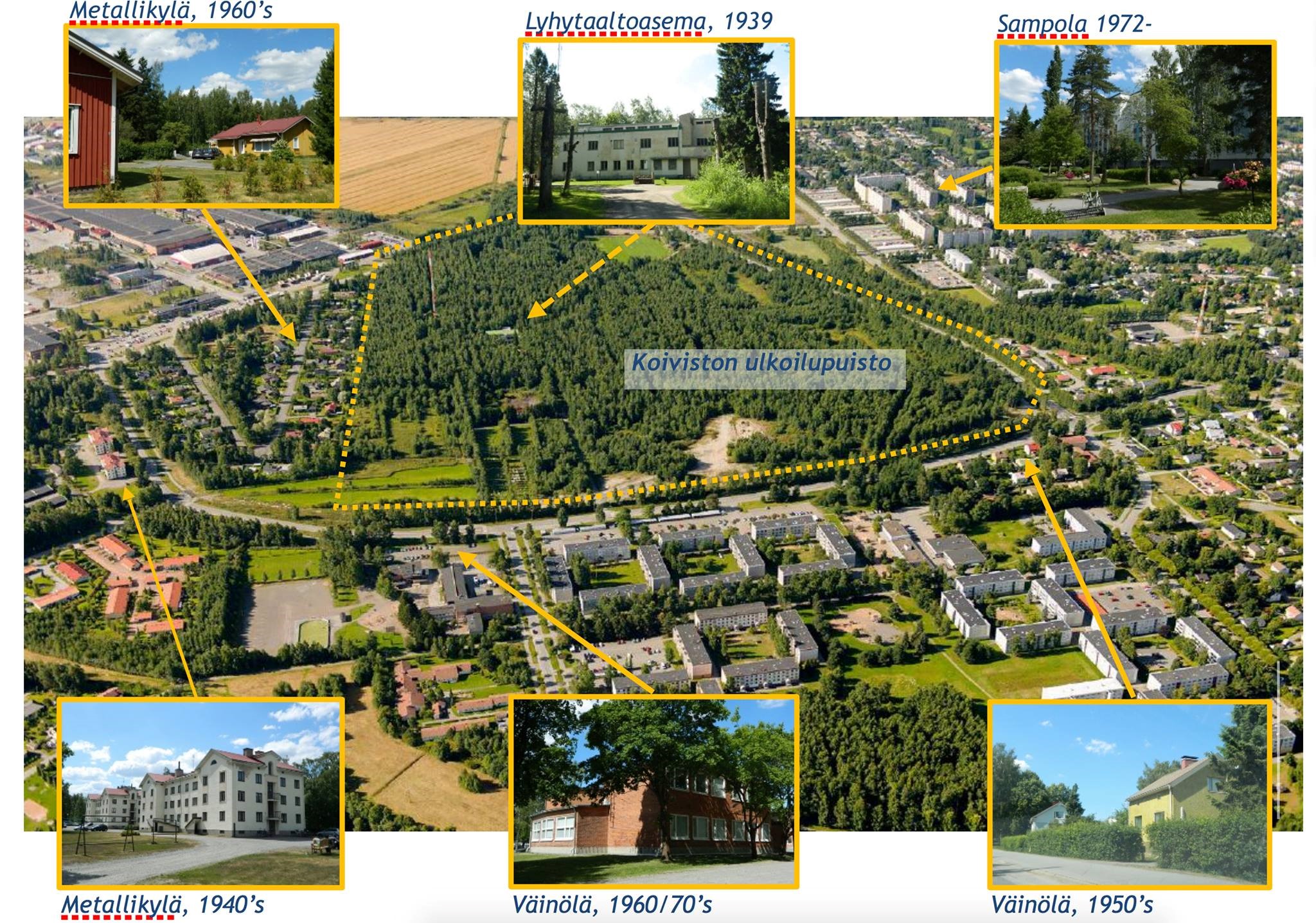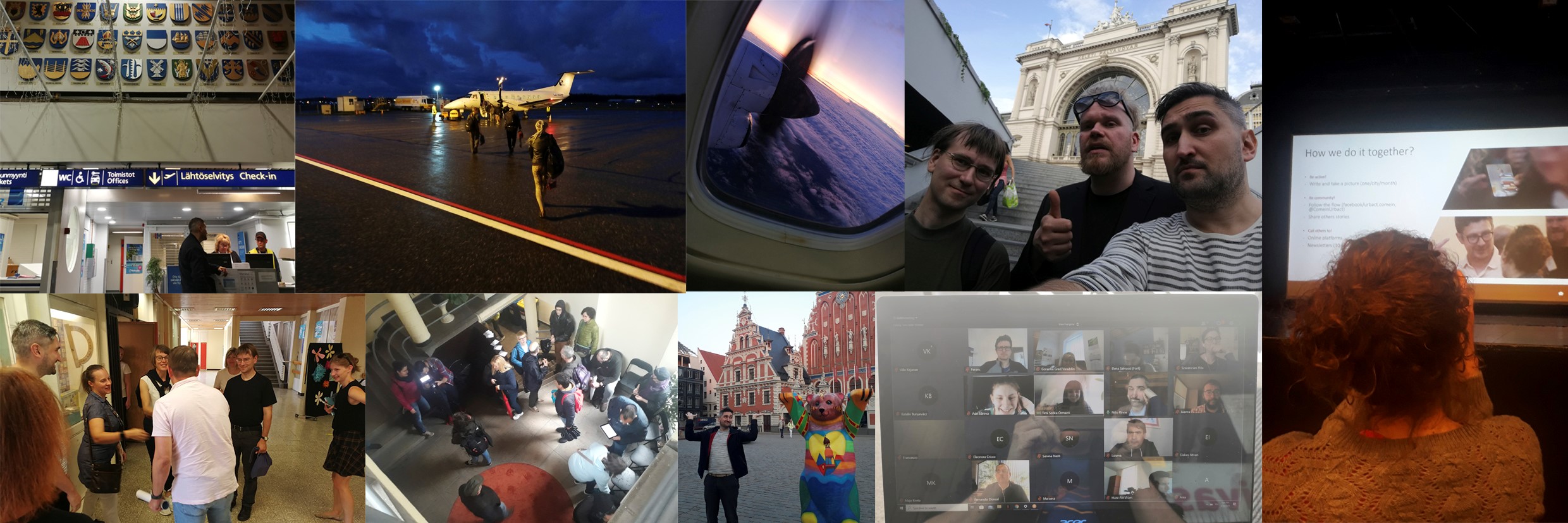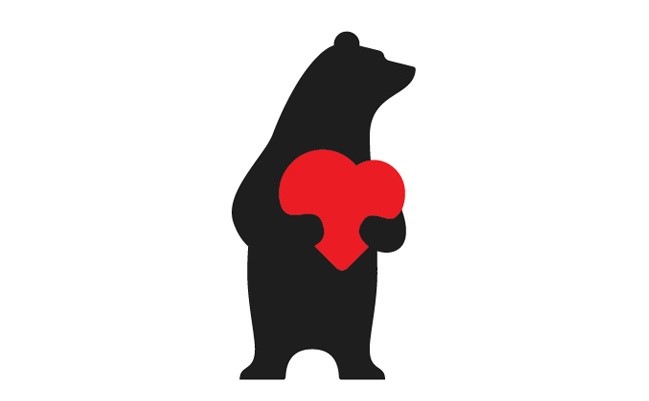A transfer story going viral. Bringing the good practice to the sub-urbs and urban green spaces
Edited on
03 June 2021When 2020 came we felt we were ready and could set about creating our community festival, highlighting the built environment of the neighbourhoods, its character and stories and introducing the radio station and its potential as a social and cultural space the people could claim as their own. Then the Covid-19 arrived. As the society around us came to a halt we wanted a new digital approach to dealing with community and a way to highlight the built heritage.

Setting the stage
Pori is an average-sized Finnish city or a small European town of around 84,000 on the western coast of Finland. It is an old industrial city with a rugged working-class charm, clean and unassuming with unexpected beauty and nature and a tendency of burning down at regular intervals throughout its history.
The Urbact Come In! Project, which has its roots in the Budapest100 festival of open doors, found me at the start of 2019 toiling away as a member of an artist collective centered at an old shortwave radio station in the middle of a green woodland park in eastern Pori. The aim was to bring the good practice of the Budapest festival to East-Pori, a community festival celebrating the built environment and cultural heritage to promote active citizenship, community and to fight urban isolation.
I was recruited to be the Urbact Local Group coordinator. I had been organizing events and exhibitions in the area with the T.E.H.D.A.S. artist collective for years. T.E.H.D.A.S. was a key stakeholder after years of operating at the old shortwave radio station with the city's blessing. An agreement with the cultural department of Pori had given us fairly free reign over the station and the park. As a representative of T.E.H.D.A.S. I was involved in the works of creating a festival in the local shopping center as a prelude to our collective's summer exhibition at the radio station.
The area in question constituted the suburbs of Sampola and Väinölä and the industrial area of Metallikylä (Metal village) with a forest/park area right in the middle housing ”our” radio station and a sculpture park that T.E.H.D.A.S. maintained. The shopping center of Sampola, about to be demolished to make way for urban development, had been a social hub of sorts and we wanted the local people to have a good send-off to their beloved landmark with a series of events including a seminar, a concert and an art exhibition. There seemed to be a need for something like the good practice of Budapest as the area was going through changes and developments that I myself had been completely oblivious to.
Getting started
Our festival at the shopping center turned out to be the stage for our first ULG-meeting and public presentation. We gave a presentation at a seminar for the public, at this point I was the veteran of my first Urbact meeting in Warsaw with the partner cities and lead partners and was on my way to becoming a true believer and an ”Urbactor”, I might have been apprehensive at first, in large part as I was completely new to Urbact and EU-projects in general. I ended my presentation with a joke about at first thinking of the EU as a ”faceless monolith but realising it is a monolith with thousands of faces, all of which are smiling.” That might lose something in the translation but it went down pretty well with the crowd. The reception was good and everyone we talked to seemed enthusiastic.
Niilo Rinne, the project coordinator, and myself sat down and began to ponder as to how to bring about the good practice. The case for Pori was special to begin with and we wondered how to approach the built heritage. At first, we even struggled a bit to map out the built heritage before doing research and finding unexpected architectural gems like the Taikurinhattu kindergarten and the Himmeli retirement home designed by the architects Raili and Reima Pietilä. Taikurinhattu or ”The Magician's Hat” receives its name from the artist Tove Jansson's famous Moomin children's books and houses original art by the artist. Together with the neighbouring Himmeli retirement home the two structures form one of, if not the most important examples of postmodernist architure in Pori or the larger Satakunta area itself.
However, the most obvious starting point or central focus still seemed to be the shortwave radio station and the surrounding green area. It seemed like an unused connecting tissue between the suburbs, an urban green space to stimulate community spirit, and it was full of history having been built before world war two for the Helsinki Olympics. The radio station was closed off to the public for the time it was in operation after the war till the 80s, but it had stood in place when the surrounding suburbs were born and had become a feature in the collective imaginations of the people and a source of local myths and legends.
The building was rundown but a beautiful example of functionalist architecture by Hugo Harmia and for decades it had broadcasted the Finnish broadcasting company YLE's programs around the globe before becoming a home for artists after YLE moved away and retired shortwave broadcasts. We set about recruiting our ULG-group with the teachers and headmasters of the local schools of Väinölä and the newly built Itätuuli education center of Sampola. We managed to bring the municipality aboard with the different heads of departments enthusiastic to be a part of the development of the area. The obvious challenge was bringing the local residents aboard, but active members emerged from the local resident's associations. Through events at the radio station and some old fashioned sleuthing and word of mouth we were introduced to local radio amateurs and people who had a personal history and connection to the station. People who had stories to share.

Urbacting onwards
New to the game our confidence grew as our lead partners explained to us the purpose and tools of Urbact and when we struggled, they explained it again, and when we were still a bit insecure, they explained everything yet again without any concernable hesitation. The chance to visit the other partner cities in the transfer network provided insights we had not even considered and taught us something about ourselves. The ULG-coordinator snores and the project coordinator has a pesky penchant for philosophizing. More importantly, we saw different approaches to the good practice and how we might approach our own community-driven festival. 2019 felt like we had a chance to have an impact and answer a need the community echoed. When 2020 came we felt we were ready and could set about creating our community festival, highlighting the built environment of the neighbourhoods, its character and stories and introducing the radio station and its potential as a social and cultural space the people could claim as their own.
Covid and going digital
Then the Covid-19 arrived. All schedules, plans and meetings were thrown out the window. Our festival wouldn't take place in the autumn of 2020 and new approaches would have to be discovered. I found the adjustment was easy, I discovered the joy of riding my bike around the empty city streets, and quickly embraced the idea of never ever wearing pants to a meeting again. Personally, removed from the horrors of Covid-19 I saw it not as a crisis but more as a chance to have a vacation to re-watch every episode of the Sopranos, fortunately, our project coordinator however became more engaged and motivated. Staring at my unforgiving webcam image I discovered that my hairline is receding, he meanwhile was already knee-deep in plan B. We had to plan and reorganize our activities to meet the new realities of post-corona community action. The radio station had held the central stage from the beginning and a digital platform had been an element of our plan all along and now it all came together to become our main focus point.
The radio station was literally a talking house that shared stories for decades and its reach was global in the era before the internet. So, building a website for the radio station to share and animate built heritage was a natural next step. The building was history, national history of Finnish broadcasting, but more importantly to us, it was local history. Locals in east-Pori still remember when in the 70s and 80s the power of the shortwave transmissions would cause the radio programmes to play out of their refrigerators, radiators and even pots and pans.
 Travelling with Urbact, talking about talking houses and sharing stories
Travelling with Urbact, talking about talking houses and sharing stories
Showcasing history, on-line and on-site
As the society around us came to a halt we wanted a new digital approach to dealing with community and a way to highlight the built heritage. We decided to build a website for the history of the building and the local stories relating to it. Stories, photos and different kinds of historical material was crowdsourced with the help of social media, and collaboration with local radios and other media. We also wanted to have something experimental, something interactive and experiential. The website was to be a tool for gathering stories as well as broadcasting them. We now have the site up and running, it is still a work in progress but does a beautiful job of showcasing the history of the radio station, serves as a bulletin board for events and goings-on for the station and offers people a platform to share their stories and to participate in its development.
As the city itself has become more aware of the station, an interest in its development has grown significantly. A large chunk of the radio station was housing local car enthusiasts, after years of tug of war they finally found a new home elsewhere and freed up a massive space for us to use. Corona forced us to cancel the festival planned for September of 2020, however, in its place we hosted a pop-up exhibition showcasing the station's history and introduced the newly freed up space to the curious members of the socially distancing public. Meanwhile, local actives independently organized an outdoor marathon event in the surrounding park area bringing more attention to the station and the exhibition despite corona restrictions limiting participation. A few days earlier without any warning the city even began renovating the facade of the building and as I was watching our project coordinator be interviewed about the history exhibition by national and local news, I allowed myself to feel a strange, warm sensation of optimism creep into me.

A glimpse into the radio station and its history
Moving forward
Our transfer process is by no means over, we still have a festival to pull off in April 2021 with the Urbact Local Group. We have a few talented artists collaborating with us, planning workshops, installations and actions to draw attention to the unique features of the area such as the aforementioned kindergarten and retirement home. Contributing to the planning we have a solid selection of local citizens, schools, resident's communities and a humble ULG-coordinator coming to terms with his new hairline and the also aforementioned, new growing sense of optimism.
Even though in all likelihood Covid restrictions will still exclude private residences, we will have a festival centered at the radio station, art and actions embedded in the suburbs that will open doors for the good practice and provide a platform for sharing stories.
We will continue to develop the digital dimension of the station and add more participatory features and hope to reach an audience even beyond the boundaries of east-Pori. We want to see the station grow into a shared space celebrating the built heritage that brings people together to share their ideas, their stories, their creativity and to take part in active citizenship and building an active community. And if Covid-19 comes again and scuttles our plans, we will have a digital dimension that preserves and broadcasts the research and the work done so far, cementing the good practice as we go forward writing our own story about east-Pori and its unique built heritage.
Ville Kirjanen, Porisian ULG-coordinator
Submitted by Adrienn Lorincz on
